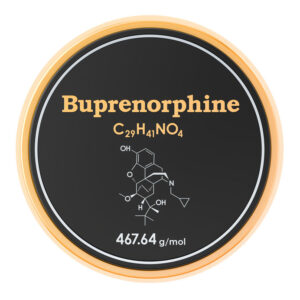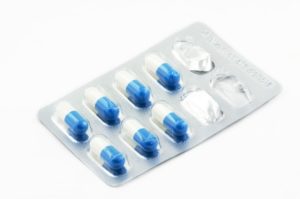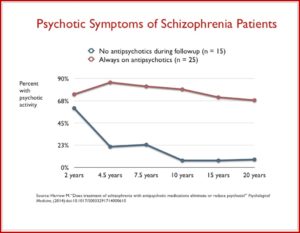The Complexities and Limitations of Buprenorphine, Part 2
William White wrote “From Bias to Balance: Further Reflections on Addiction Treatment Medications” in an attempt to open a dialogue between the polarized sides of using opioid medications like buprenorphine to treat opioid addiction. In Part one of this article I expressed my belief that the impasse between the two sides is largely for philosophical, not scientific reasons. Medication advocates presume what Joanna Moncrieff calls a disease-centered model of drug action that leads to the belief and portrayal of certain medications as a panacea for opioid use disorders, something that the so-called medication haters soundly reject. I suggested that beginning instead with what Moncrieff calls a drug-centered model would allow for a more productive dialogue on the complexity and limitations of using buprenorphine to treat opioid use disorder.
In “Rethinking Models of Psychotropic Drug Action,” Joanna Moncreiff described the distinctions between two different types of drug action, the disease-centered model and the drug-centered model. She added that theoretical assumptions about how psychotropic drugs work are rarely discussed explicitly. The disease-centered model underlies orthodox psychopharmacology. It assumes that a psychotropic drug like buprenorphine helps correct a biochemical abnormality. In other words, medications are understood to work by acting on a disease process.
This notion, sometimes called the ‘chemical imbalance’ theory, is the explicitly stated view of SAMHSA, which says MAT medications (like buprenorphine) “relieve the withdrawal symptoms and psychological cravings that cause chemical imbalances in the body.” But in a ‘drug-centered model’ the distinctive physiological, behavioral and subjective effects of drugs are used to define drug action. “The therapeutic value of a drug stems from the usefulness of these effects in clinical situations.”
In this approach, drugs are seen to induce characteristic physiological and subjective states that may, or may not, be experienced as useful in certain social and interpersonal situations, including clinical situations. Unlike the disease-centred model that assumes that drugs move an abnormal physiological state towards a more normal one, the drug-centred model suggests that drugs create their own characteristic abnormal states or alterations of normal states. It is these states or effects that need to be described and understood, and the potential therapeutic value of a drug is deduced from this understanding. It is therefore implied that diagnosed patients and normal volunteers’ basic physiological responses to drugs will differ only in so far as a degree of individual variation in drug response (including variation in arousal, set, biological sensitivity) always exists.
Consistent with what Moncrieff said here regarding the drug-centered model, in “From Bias to Balance,” William White said the potential risks and benefits of medication support when treating opioid addiction are not uniform. He thought recovery advocates needed to have a general knowledge of the evolving science and the clinical experience with regard to the overall benefits and risks associated when medications like buprenorphine are used in medication-assisted treatment—what the side effects are, when and for whom it is indicated and contraindicated. “The question of potential degree of help or harm of medications in the treatment of addiction is unanswerable without also asking, ‘For whom?”’ ‘For what purpose?’, ‘For how long?’, and ‘At what cost?’.” White said that despite knowing that people recover from opioid addiction with and without medication support, the addiction treatment field still has not clinically defined who would benefit most from pharmacotherapy and for whom it would be contraindicated. He thought answering that question would be a major step forward.
The potential differences between those who achieve stable recovery (five years plus of opioid abstinence) from opioid use disorder through pharmacotherapy and those who achieve stable recovery without medication support are unclear. Nearly 40% of Narcotics Anonymous (NA) members report regular use of narcotics and an average of 8.2 years of continuous recovery. This would seem to challenge the bleak prospects of recovery from opioid addiction without medication support that dominates the professional literature and popular media. “Yet such recoveries from opioid use disorders within NA remain a rare focus of scientific study.”
There is also no consensus on the optimal duration of medication-assisted support in the treatment of opioid use disorder. SAMHSA said the length of time should be tailored to each patient and could be indefinite. In SAMHSA’s TIP 63, the section “Duration of Buprenorphine Treatment,” stated there was no known duration of buprenorphine therapy where patients could be certain they would not return to illicit opioid use. “Patients should take buprenorphine as long as they benefit from it and wish to continue.” ASAM, the American Society of Addiction Medicine, echoed SAMHSA’s indefiniteness, giving the following advice in their “National Practice Guideline” for the length of treatment with buprenorphine when treating opioid use.
There is no recommended time limit for treatment with buprenorphine. Buprenorphine taper and discontinuation is a slow process and close monitoring is recommended. Buprenorphine tapering is generally accomplished over several months. Patients and clinicians should not take the decision to terminate treatment with buprenorphine lightly.
Consistent with this reluctance to define or investigate a time limit for treatment with buprenorphine, William White said there has been inadequate attention to the process of tapering when clients choose to maintain their recovery without medication. The statistics reported in the research literature on those who attempt buprenorphine treatment are not promising. Meinhofer et al reported that over one-half (55%) of individuals discontinued buprenorphine within about six months and 13% experienced at least one adverse opioid-related event within 360 days of starting with buprenorphine. Hser et al reported that only 46% of buprenorphine participants completed 24 weeks of treatment; 24.8% dropped out within the first 30 days.
White stated the reality is that many patients who begin MAT for opioid addiction stop taking the medications within a matter of months. He cited a study of adolescents and young adults, “Receipt of Timely Addiction Treatment,” that found the median retention of those who did use buprenorphine was less than six months. Could it be that the intent to limit the risk of overdose mortality by leaving the time limit for MAT with buprenorphine open-ended has led to a perceived “Hotel California” effect in buprenorphine treatment? You can check in anytime you want, but you’ll find you can never leave. Open-ended treatment protocols like the SAMHSA and ASAM recommendations for buprenorphine leads abstinence-based recovery advocates and some addicts to conclude the goal is to keep patients “parked” on medication forever.
One factor influencing the open-ended recommendations for MAT is the high risk of overdose mortality when an opioid addict resumes active use. In the four weeks following the cessation of medication maintenance, death rates as high as four times that of patients who remain in treatment have been reported, due to the lost tolerance from their abstinence. This parallels the risk of overdose mortality after the release from a prison, hospital or inpatient/residential addiction treatment program.
One of White’s suggested action steps was to expand supports available for patients during and after medication tapering. According to ASAM, factors associated with the successful termination of treatment with buprenorphine are not well described, but may include the following:
- Employment, engagement in mutual help programs, or involvement in other meaningful activities.
- Sustained abstinence from opioid and other drugs during treatment.
- Positive changes in the psychosocial environment.
- Evidence of additional psychosocial supports.
- Persistent engagement in treatment for ongoing monitoring past the point of medication discontinuation. Patients who relapse after treatment has been terminated should be returned to treatment with buprenorphine.
White said long-term follow-up studies of people with opioid use disorders find that between a third and half of those who achieve stable recovery have far less problem severity and complexity and have great recovery capital (e.g., education, employment, family and social support).
The overwhelming majority of addiction medication providers assert the value of psychosocial interventions as a critical component of addiction treatment, but little more than a third report that their organizations and local communities have the resources to provide such interventions for patients using medication to support recovery from an opioid disorder.
A final complexity and limitation with buprenorphine as an opioid medication is that buprenorphine is itself an opioid. Given Moncrieff’s drug-centered model of medication action, this reality needs to be acknowledged by treatment professionals and addressed when evaluating the overall benefits and risks of buprenorphine. The potential degree of help or harm it may incur should also be discussed honestly and openly with the individual. One of the likely effects an individual should expect when tapering off of buprenorphine is the emergence of a withdrawal or discontinuation syndrome.
In Part 1 of this article, I discussed how according to the drug-centered model, when psychoactive medications like buprenorphine are taken over a long period of time, they “induce physical adaptations to the presence of the drug.” The body attempts to counteract the effects of the drug, which it sees as a foreign, exogenous substance. In time, a kind of homeostasis is reached between the effects of the medication and the body’s adaptations to it. When the medication is stopped, the body’s adaptations overpower the now weakened medication effect and symptoms of withdrawal or discontinuation are evident. I’d suggest this is likely with years of medication maintenance and even after a slow, gradual taper.
The taper event should be addressed clinically as a relapse trigger and the resulting withdrawal symptoms understood simply as that; and not as a reemergence of the ‘disease state’ that will lead back to active use if buprenorphine maintenance is not resumed. I think this discontinuation or withdrawal is best understood as the delayed manifestation of post-acute withdrawal (PAW) symptoms. The original use of an opioid recreationally was supplanted by an opioid (buprenorphine) used as a MAT and the original emergence of PAW symptoms was muted or never truly occurred.
I’ve added the thinking of Terrance Gorski on recovery and relapse to the discussion here. See “Preventing the Relapse Process,” Part 1 and Part 2 for a discussion of relapse. See “Managing Your PAWS” and “Recognizing Your PAWS” for a discussion of post-acute withdrawal. Also see the Gorski-CENAPS Corporation for his books and workbooks.
I think there can be productive dialogue between the two opposing views of medication-assisted treatment. A necessary first step is to see buprenorphine and opioid use disorder through the lens of the drug-centered model of medication action. Then there can be discussions of the complexities and limitations of treating opioid use disorder with an opioid. Research won’t have to ignore that elephant in the methodology. And then we can begin to do the truly important work of answering the questions—for whom, for what purpose, for how long and at what cost—as we assess the potential help or harm of buprenorphine as a treatment for opioid use disorder.





